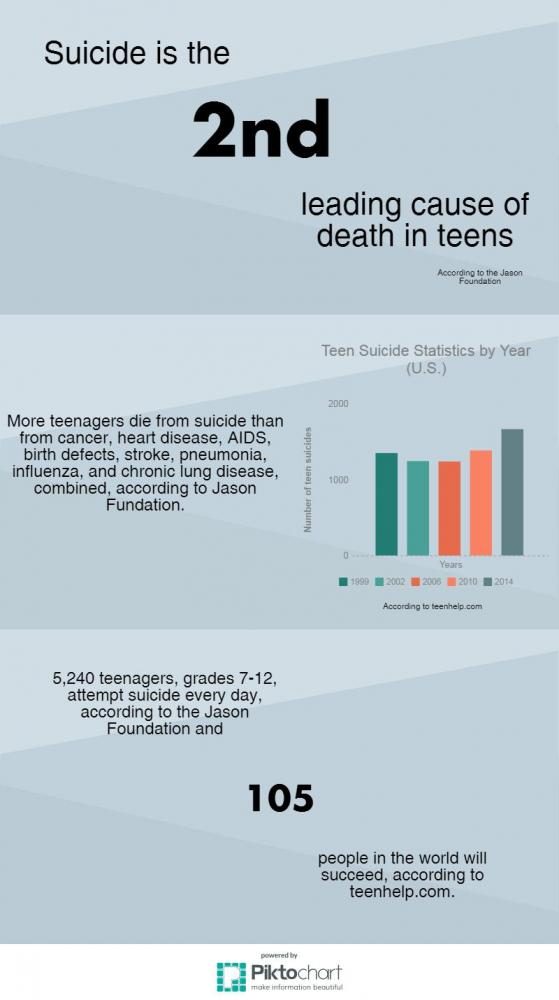Awareness: the beginning to preventing suicide
Suicide rates for teens in the United States have increased by 24 percent between 1999 to 2014 and have shown no sign of stopping, according to CDC.gov. It is our responsibility as human beings to increase suicide awareness and erase the shame and stigma that is associated with people who are suicidal.
As suicide and depression have become a more talked about topic in the media in recent years, it is provoking needed conversations about this pressing topic. This change in narrative is a step in the right direction but is only the first of many.
“I think it’s very important to create awareness about suicide. I think being more aware helps to create a dialogue around the topic and in creating this dialogue, we’re also reducing a lot of the shame and stigma that goes associated with it,” Jazzmin Villanueva, a local licensed clinical psychologist, said. “If we’re able to do that, then hopefully this conversation within our own communities will help people feel like they can reach out to someone.”
An important step in the journey of awareness towards the subject of suicide is to talk about or, at the very least, say the word “suicide.” In order to be able to become more aware of people who may be struggling with suicidal thoughts, it is important to try to become more comfortable talking about the topic in the first place, Villanueva said.
“I think when we’re talking about stigma, especially with suicide, people think people who think about suicide or have been known to have attempted suicide people usually associate the person is someone sort of ‘freak’ or that there’s something wrong with them or their life,” Villanueva said. “The stigma assumes that suicidal people are different or need special attention that may not necessarily be warranted.”
This is just simply not the truth and one of the reasons why suicidal people may not reach out for help. They are still human beings and deserve to be treated as such, but might just need comfort or support from a friend, or consistent help from a professional. Anyone can and should approach someone who is showing signs of being suicidal. Sometimes just a smile can be the difference between life and death and “all of us can do our part to prevent suicide,” Lisa Firestone Ph.D., a writer for Psychology Today, said.
“In a chilling diary entry [from someone] who died by suicide, [he] left [a] message that if one person smiled at him on his walk that day, he wouldn’t kill himself,” Firestone Ph.D., said. “Though the consequences can be fatal, suicide is not a black or white issue. Suicidal people are often very ambivalent. They are experiencing an inner debate between a part of them that wants to live (their real self) and a part that wants to die (their anti-self). Reaching out and connecting with the part of them that wants to live can truly save a life.”
If you or someone you know is considering suicide or is suicidal, call 1-800-273-8255, the National Suicide Prevention Lifeline. It is important to remember that, as Villanueva said, “suicide is a permanent solution for a temporary problem.”

This will be Rachel's third year on staff. After being a staff writer for two years, she has been given the opportunity this year to take on the responsibilities...

